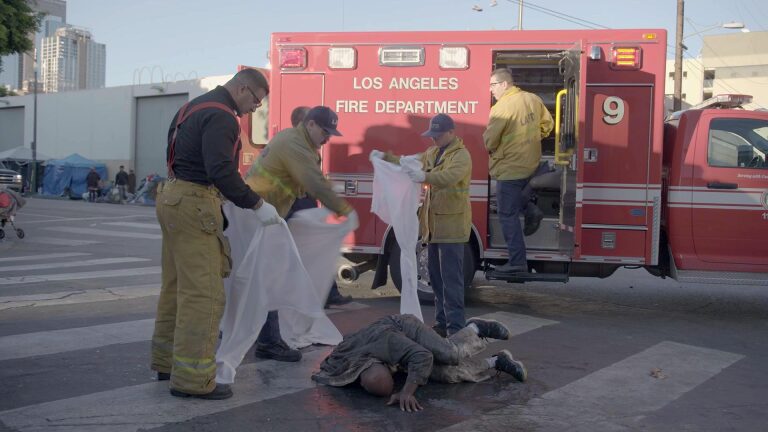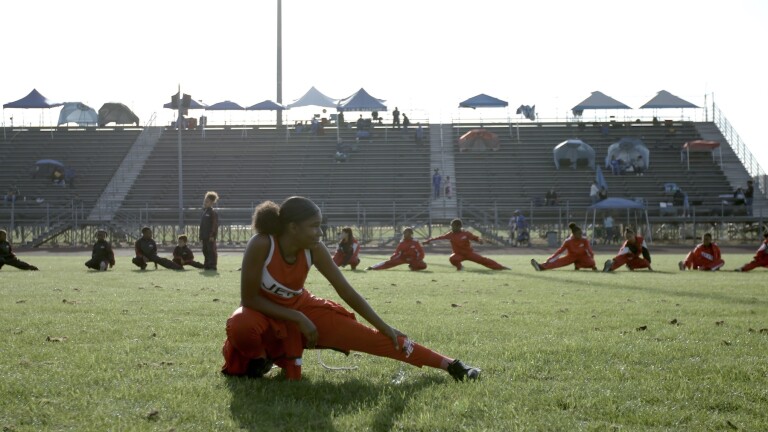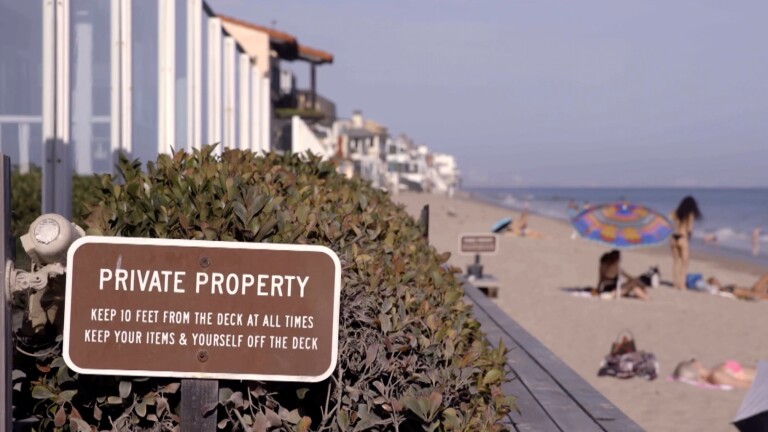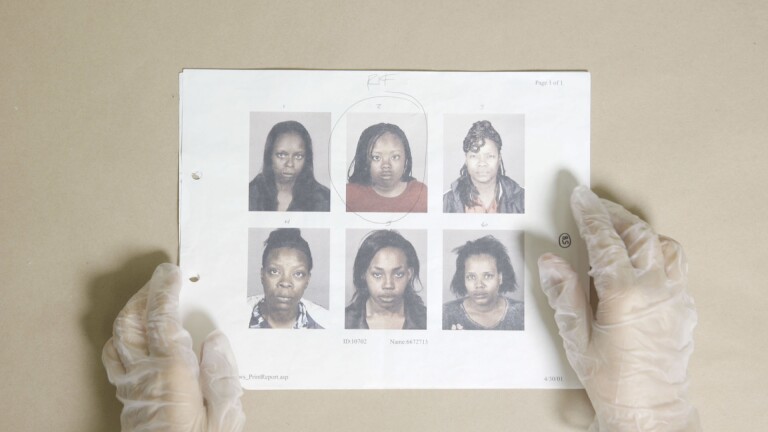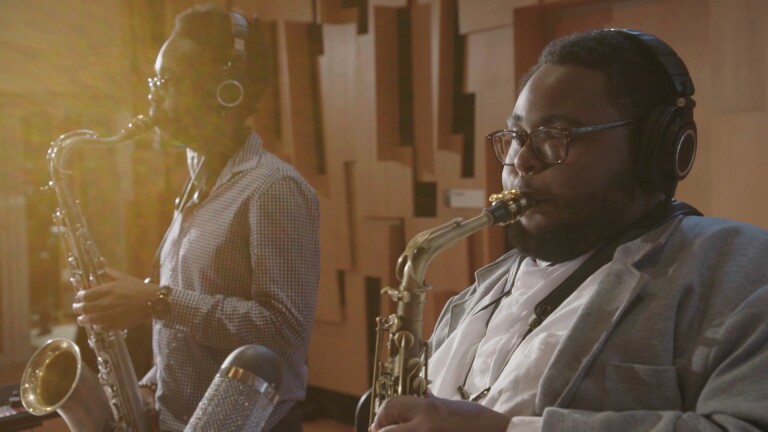A Great Use for UC Irvine’s Garbage
Food scraps from UC Irvine’s commissary used to be sent to landfills where it produced destructive greenhouse gases. But in Orange County, a state-of-the-art recycling plant takes that yucky garbage and turns it into a grey “smoothie,"a potent fuel that helps power engines at a water treatment plant. As reporter Nic Cha Kim discovered, this cutting edge technology may become more common as a new law goes into effect, requiring food waste to go somewhere other than landfills.
Transcript
Nic Cha Kim: As a kid, my favorite movie was “Back to the Future,” and my favorite scene is at the end, when Doc Brown powers the DeLorean with garbage. Thirty years later, we're getting really close to that. I'm not saying garbage will take us back in time just yet…but it can power an enormous water treatment facility -- turning sewage into clean water. So how does this…(food scraps)... become fuel for this (water treatment plant)? To find out, I had to follow the garbage. The trail starts here at a student dining commons at UC Irvine. What they don't eat... gets scraped into bins, and then wheeled away into bigger bins.So how much garbage are we talking about? Tons.Anne Krieghoff is the Facilities Manager at UC Irvine. She helped pioneer the food waste recycling program.
Anne Krieghoff: You put those food bins where the food is being prepared. Things like cantaloupe peels, pineapple rinds. All those things would go just right into the bin.
Nic Cha Kim: And why are they going through all this trouble? Because food waste, when it goes to a landfill, produces methane and methane is a powerful greenhouse gas. That's bad for news for the environment. But if food is recycled and we collect that methane, that methane can become energy and that's good. That's why they're collecting all this garbage, diverting it from landfills and turning it into energy.
Anne Krieghoff: Right now, we’re collecting somewhere in the neighborhood if 660 tons every year.
Nic Cha Kim: That’s a lot of organic waste.
Anne Krieghoff: Yes, it is.
Nic Cha Kim: Now, UC Irvine has expanded the food waste recycling program to all 26 restaurants on campus. And now, back to our garbage trail. Every day, truckloads of food waste make the 10-mile trek up the 5 to the city of Orange. Destination? This state-of-the-art recycling center. Tom Koutroulis gave me a tour. He likes to call it a recycling park. So, on this side, what do you collect?
Tom Koutroulis: On this side is our organics. Our food waste recycling program. This is actually called the CORE.
Nic Cha Kim: Step one -- dump everything onto the floor.
Tom Koutroulis: The food waste is dumped onto the floor. It's then loaded onto the hopper......where it's mixed and blended to separate out all of the contaminants, and then a power smoothie is made to be sent to the waste water treatment facility.
Nic Cha Kim: The technical term for "smoothie" is "bio-slurry." If oil is black gold, bio-slurry is grey gold. So this is where the bio-slurry comes out?
Tom Koutroulis: Yeah. Let's take a look.
Nic Cha Kim: Wow, it's got a funky consistency. Is there a particular recipe to the bio-slurry like two parts banana peel, one part coffee grinds?
Tom Koutroulis: It's actually a little bit more complicated than that... much like our facility being proprietary, so is our blend. We know exactly what recipe we have and exactly how much gas it's going to make and we know exactly what we need to deliver.
Nic Cha Kim: Deliver? Deliver to whom? I mean, who actually wants this stuff? That takes us to the final stop on our food-to-fuel journey. This fuel truck takes the bio-slurry 32 miles west to Carson.This is a waste water treatment facility... and it handles half of all the sewage produced in Los Angeles County. And this plant is fueled by… guess what? Methane. And the methane is created by sewage… and... Bioslurry. It all happens in this digester.
Mark McDannel/Supervising Engineer, Los Angeles County Sanitation Districts: So a digester, you're looking at that tank, that's about four million gallons, that's basically a four million gallon cow's stomach. If we add 10% food waste into that digester, we'll get twice as much methane off.
Nic Cha Kim: And when you handle sewage for 5 million people, every bit of methane helps.
Mark McDannel: It looks like a smoothie, it acts like rocket fuel when you add it to the digester. We're collecting all that methane, we're running it in our power plant on-site and we're meeting all of our electricity needs.
Nic Cha Kim: That's right. They produce all the energy they need to run the entire treatment plant. And it all started in that kitchen at UC Irvine. In the meantime, you're going to be seeing a lot more of these. Why? Because a new law is requiring that organic waste --- like this-- be kept out of our landfills.That means food businesses and restaurants will have to start separating their food waste. Del Frisco’s is one business affected by the law. Restaurant Manager Katie Pavkov had to retrain her staff.
Katie Pavkov/Restaurant general manager: The staff knows the program, they're scraping the plates the right way, and it's always setup the same way is probably the only challenge we see.
Nic Cha Kim: And despite the additional work, Katie didn't mind the change.
Katie Pavkov: It made sense. There wasn't any real negative reason for us not to do it. Obviously, if laws are getting implemented, it's something we have to do anyway.
Nic Cha Kim: Now, don't freak out. The new law does not apply to us regular folks at home. But it will over time apply to all restaurants, big and small.
Is it all worth it?
Anne Krieghoff: It's very much worth it. It’s just a small process change with a huge environmental difference.
Katie Pavkov: I think that it's our responsibility to make sure we're doing our part. You know I think it's important for us to make sure we're doing what we can for the environment.
Nic Cha Kim: How important do you think this bill is?
Tom Koutroulis: I think it’s very important. It will help motivate and give reason for our businesses to recycle for those that are not motivated. We wanted to find a beneficial reuse for everything that we touch...and food waste being one of our final frontiers... we had to come up with a creative solution.
Nic Cha Kim: When it comes to garbage, turning food waste to fuel is one creative solution whose time has come. I'm Nic Cha Kim for “SoCal Connected.”

